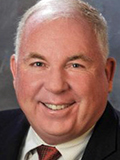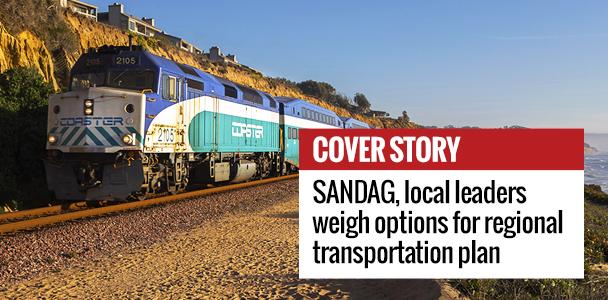SANDAG, local leaders weigh options for regional transportation plan
SANDAG and San Diego County are putting the pieces together for a public transit system that’s a practical, alluring alternative to the congested highway, but it may be many years in the making.
In February, the San Diego Association of Governments board approved an action plan to move forward on limiting greenhouse gas emissions, expanding public transit, looking at new transit technologies and providing a realistic public transit alternative to driving. The manifestation of this plan is to be what sdforward.com describes as a “bold new vision” for the 2021 Regional Plan with strategies introduced in April.
These strategies, the five big moves, cover complete corridors between multiple transit options, a network of high-speed transit services relying on new and existing infrastructure throughout the county, mobility hubs connecting transit services in high traffic areas, a fleet of on-demand transportation services feeding into those mobility hubs, and a digital platform to connect these transit services.
SANDAG Planning Director Charles Stoll explains that although the existing transit system is well used, expanding available choices and general access for San Diego commuters while limiting greenhouse gas emissions and traffic is the goal.
“If you live along one of the trolley routes or you live up the coast and are close enough to access a Coaster station, all of that works very well, but there’s a lot of the region where public transit isn’t a very viable option,” Stoll said. “What’s in it for San Diegans is a choice and, in the future, a two-car family might be able to survive with one and buy transportation services instead.”
Expanding transit infrastructure is being approached on the holistic level both from the standpoint of multiple forms of transit and the individual San Diego districts coalescing.
Catherine Blakespear, Encinitas mayor and SANDAG representative, described this coalescence as looking at what is best for the region and its goals along with the 18 representative board members combining a regional and local mindset to determine what transportation will look like through the county as a whole.

“We need to be able to wear our local hats when we’re making decisions locally and our regional hats when we’re making decisions regionally,” Blakespear said.
This feeds into SANDAG conducting analysis on housing, land use and employment data from San Diego districts to find how to best lay this new transit system throughout the county.
“It’s a little bit of a relationship sort of thing; all of the cities are members of SANDAG, and we work with them to plan where their land development will go in the future,” Stoll said.
But this renovation isn’t right around the corner. Escondido Mayor and SANDAG representative Paul McNamara points out that car culture has impacted how many cities in California are laid out, what transit structures were built, and that San Diego is no exception to those realities.

“All you have to do is ride in rush hour traffic to know that we’re finally at a forcing function where we really need to get serious about public transportation, and that’s actually a good thing, but the problem is it’s going to take many years,” McNamara said.
This is a reality that comes along with any long-term transportation plan, hence why Charles Stoll describes SANDAG’s transit goals as a process that evolves in stages with the developing region.
“In the shorter term, it’s going to be working to get there. Obviously, we can’t build a system like this all at once, it’s going to come in stages,” Stoll said.
Part of that short term is looking at how the region can utilize existing transit corridors and see what needs to be added, improved or updated.
“The fact is the transportation system we already have serves our region,” Stoll said. “It definitely connects up where people work and live, but it’s overused and congested, so what we want to do is provide some competitive options.”
In addition to public transportation that’s competitive with driving time frames, Blakespear also notes the need for a transit option from San Diego International Airport.
“All major metropolitan areas have a transit option from their airport, and we have it, but it’s not ideal,” Blakespear said.
On the topic of Uber being a public transit competitor, one of the options being considered is a fleet of on-demand vehicles, as in a public ride-share service. Stoll and SANDAG’s interest in this as an option was stoked by growth in the ride-share industry over just the past five years.
“If we can find a way to automate those on-demand trips and do it in a way that shares the rides efficiently, then we could really have a major impact on congestion levels and reduce to the total number of trips in the system,” Stoll said.
While McNamara acknowledges that ride-shares, particularly self-driving vehicles, are a possible future for the region, public will for it is a concern considering that Proposition 6 — the vote to repeal the gas tax that helps fund transportation projects — passed in San Diego. While the statewide measure was voted down in November 2018, a little more than 50% of San Diego County voters supported ending the tax, according to the county’s Registrar of Voters. McNamara attributes this to HOV lanes being the groundwork for a public and autonomous ride-share service, pushing the question of how soon a fleet of on-demand transit will be possible.
“Prop. 6 said no more money for gas, and that money was supposed to fix transit problems,” McNamara said. “There are those that would argue that the county doesn’t have the will to do that. Now we don’t really know, but if you’re trying to read the tea leaves.”
Joel Vaughn is a North County freelance writer
encinitas current, cardiff current



